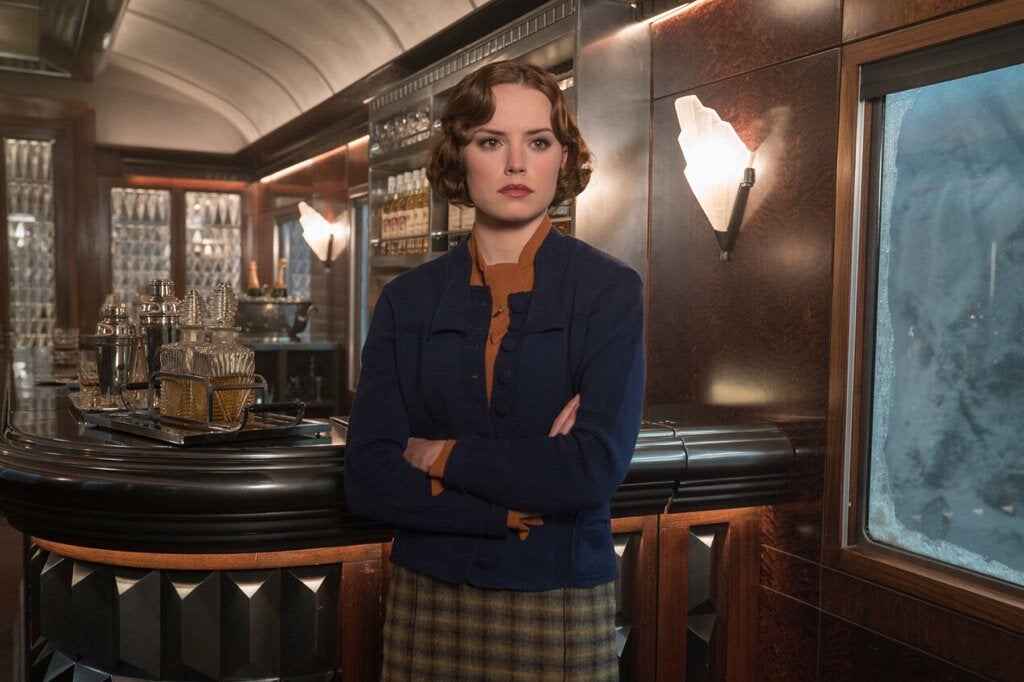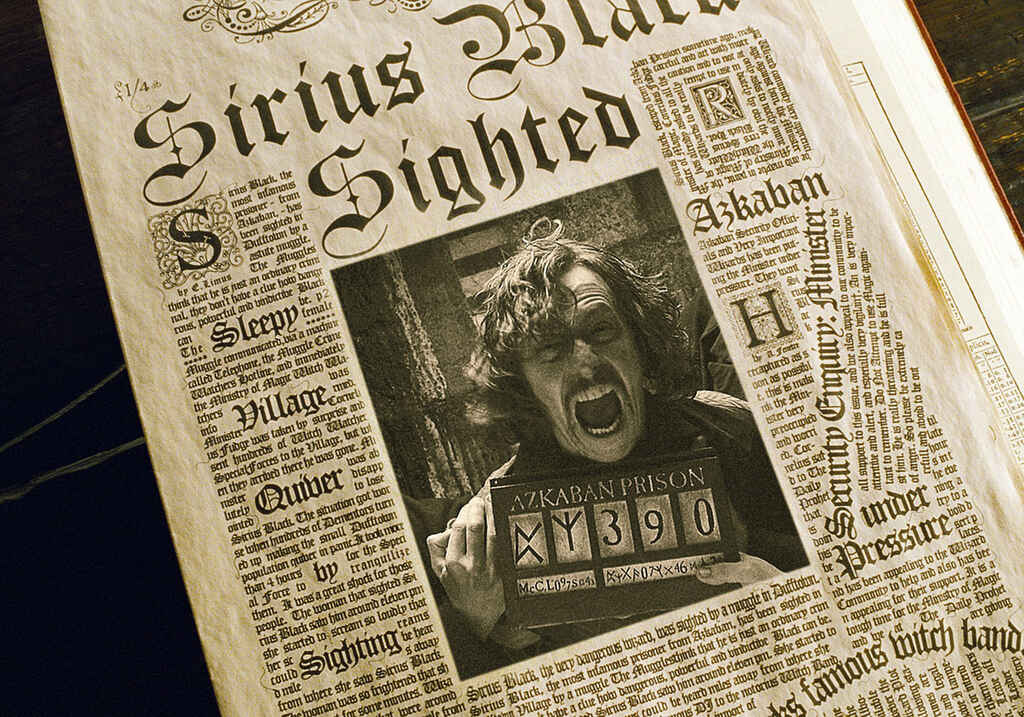Which Of The Following Lines From Act I Of Hamlet Provides Exposition? Select All That Apply.
Exposition is a literary device that introduces key background information to the reader. This can include anything from a character's backstory to a description of the setting.
Though exposition is necessary for nearly every single story, it's hard to get it right. You've probably already experienced an "information dump," which happens when poorly-executed exposition becomes a wall of text that a reader hastily skips past.
For a practical demonstration of how great authors communicate information in their writing, here are 11 examples of exposition taken from famous works.
Revealing background information through dialogue
Dialogue is one of the most organic ways to introduce exposition: it's a prime example of the #1 writing rule, "Show, don't tell." Instead of telling readers the key details, the author can show them through a conversation. Let's take a look at some examples of expository dialogue in action.
Exposition example: Pride and Prejudice, Jane Austen
In the opening of Pride and Prejudice, Austen provides a masterclass in elegant exposition, establishing character relationships and setting up the novel's action in one conversation.
"My dear Mr. Bennet," said his lady to him one day, "have you heard that Netherfield Park is let at last?"
Mr. Bennet replied that he had not.
"But it is," returned she; "for Mrs. Long has just been here, and she told me all about it."
Mr. Bennet made no answer.
"Do you not want to know who has taken it?" cried his wife impatiently.
"You want to tell me, and I have no objection to hearing it."
This was invitation enough.
"Why, my dear, you must know, Mrs. Long says that Netherfield is taken by a young man of large fortune from the north of England; that he came down on Monday in a chaise and four to see the place, and was so much delighted with it, that he agreed with Mr. Morris immediately; that he is to take possession before Michaelmas, and some of his servants are to be in the house by the end of next week."
By eavesdropping on this short exchange, we're able to both gain an understanding of the relationship between the Bennets (her being the gossip, him being the long-suffering listener), and learn that an inciting incident has disrupted their life's status quo: the arrival of a wealthy single man into the village.
Exposition example: Lord of the Flies,William Golding

We begin Lord of the Flies in medias res, with a group of boys having already crash landed on an uninhabited island.
"This is an island. At least I think it's an island. That's a reef out in the sea. Perhaps there aren't any grownups anywhere."
The fat boy looked startled.
"There was that pilot. But he wasn't in the passenger cabin, he was up in front."
The fair boy was peering at the reef through screwed-up eyes.
"All them other kids," the fat boy went on. "Some of them must have got out. They must have, mustn't they?
Rather than having us witness the action, Golding establishes the crash and setting through dialogue, as we see the boys discuss what has happened, and question what will happen next.
Exposition example: Hamlet, Shakespeare
If anyone knows good dialogue, surely it's Shakespeare. In this excerpt, we get an example of his efficiency in expositing dynamics and backstory through dialogue.
KING CLAUDIUS
Take thy fair hour, Laertes; time be thine,
And thy best graces spend it at thy will!
But now, my cousin Hamlet, and my son,--
HAMLET
[Aside] A little more than kin, and less than kind.
KING CLAUDIUS
How is it that the clouds still hang on you?
HAMLET
Not so, my lord; I am too much i' the sun.
Here, he establishes the tense relationship between Hamlet and his uncle, and introduces one of their key conflicts: Claudius feels Hamlet is too upset over the death of his father, while Hamlet finds Claudius cruel.
Narrative digressions to fill in important details
Exposition doesn't need to come from characters themselves. Another expository tool at writers' disposal is the use of narrative digressions to flesh out background and fill in gaps in the reader's knowledge.
This technique should be used delicately: a reader doesn't need to know every mundane detail about a character's life, and frequently breaking from the plot to insert backstory can make a story lose tension. As Kurt Vonnegut once said: "Every sentence must do one of two things: reveal character or advance the action."
Great authors are usually sparing with this technique, only breaking from the action to fill in the most essential details. Let's look at a few examples of narrative exposition to see how this can be achieved.
Exposition example: A Game of Thrones, George R. R. Martin

In this passage, Martin uses a brief narrative digression to establish both Catelyn Stark's backstory and her religious piety.
Catelyn had been anointed with the seven oils and named in the rainbow of light that filled the sept of Riverrun. She was of the Faith, like her father and grandfather and his father before him. Her gods had names, and their faces were as familiar as the faces of her parents. Worship was a septon with a censer, the smell of incense, a seven-sided crystal alive with light, voices raised in song. The Tullys kept a godswood, as all the great houses did, but it was only a place to walk or read or lie in the sun. Worship was for the sept.
Martin is able to share insights into Catelyn personally, while also expanding on his worldbuilding, giving insight into religious norms and practices in a natural way.
Exposition example: Nineteen Eighty-Four, George Orwell
Here, Orwell makes a digression from the action of the scene, the Two Minutes Hate, to give explanatory context to this act, and to provide more background history for his world.
As usual, the face of Emmanuel Goldstein, the Enemy of the People, had flashed on to the screen. There were hisses here and there among the audience. The little sandy-haired woman gave a squeak of mingled fear and disgust. Goldstein was the renegade and backslider who once, long ago (how long ago, nobody quite remembered), had been one of the leading figures of the Party, almost on a level with Big Brother himself, and then had engaged in counter-revolutionary activities, had been condemned to death, and had mysteriously escaped and disappeared. The programmes of the Two Minutes Hate varied from day to day, but there was none in which Goldstein was not the principal figure. He was the primal traitor, the earliest defiler of the Party's purity.
Orwell takes the opportunity to establish who Emmanuel Goldstein is at a time when he has naturally appeared within the action, meaning the break from the plot is less jarring.
Exposition example: Huckleberry Finn, Mark Twain
The first person narration of Huck Finn allows Twain to easily establish key details about Huck and his story.
Now the way that the book winds up is this: Tom and me found the money that the robbers hid in the cave, and it made us rich. We got six thousand dollars apiece—all gold. It was an awful sight of money when it was piled up. Well, Judge Thatcher he took it and put it out at interest, and it fetched us a dollar a day apiece all the year round—more than a body could tell what to do with. The Widow Douglas she took me for her son, and allowed she would sivilize me; but it was rough living in the house all the time, considering how dismal regular and decent the widow was in all her ways; and so when I couldn't stand it no longer I lit out. I got into my old rags and my sugar-hogshead again, and was free and satisfied. But Tom Sawyer he hunted me up and said he was going to start a band of robbers, and I might join if I would go back to the widow and be respectable. So I went back.
Here, Huck's backstory is explained through a condensed version of Twain's earlier novel, The Adventures of Tom Sawyer, told through Huck's point of view.
Seamless exposition through internal monologue
Internal monologue is exactly what it sounds like: text that gives readers a direct glimpse into a character's inner thoughts and feelings. As you might have guessed, it's another way in which authors can insert exposition.
Exposition shown through internal monologue can establish key details while advancing character development, as we can now see into the character's mind.
Exposition example: Girl, Woman, Otherby Bernadine Evaristo
The narration of Amma, one of twelve point of view characters in Girl, Woman, Other, frequently digresses as it follows Amma through the day her new play will open at the National Theatre.
forty years of first nights and she's still bricking it
what if she's slated by the critics? dismissed with a consensus of one-star reviews, what was the great National thinking allowing this rubbishy impostor into the building?
of course she knows she's not an impostor, she's written fifteen plays and directed over forty, and as a critic once wrote, Amma Bonsu is a safe pair of hands who's known to pull off risks
what if the preview audiences who gave standing ovations were just being kind?
oh shut up, Amma, you're a veteran battle-axe, remember?
This snippet of her internal monologue not only gives us insight into Amma as a person, and her underlying insecurities, but also provides more background information on her and her storied career as a playwright.
Exposition example: Tokyo Ueno Station , Miri Yu
In this passage, speaker Kazu's reflections on the sound of rain and its associations leads to the reveal of a major part of his history, the death of his son.
On nights when it rained, I couldn't stop myself from listening to the sound, which kept me from sleeping. Insomnia, then eternal sleep — held apart from one by death and the other by life, brought closer to one by life and the other by death, and the rain, the rain, the rain, the rain, the rain.
It rained on the day that my only son died.
This kind of associative internal monologue, using sensory experiences to trigger characters' memories, is a realistic and natural way of introducing exposition.
Exposition example: Murder on the Orient Express, Agatha Christie

This passage establishes key information about Mary Debenham, through the internal monologue of Poirot upon seeing her for the first time.
There was only one occupant at the moment, obviously the young English lady referred to by the conductor. She was tall, slim and dark—perhaps twenty-eight years of age. There was a kind of cool efficiency in the way she was eating her breakfast and in the way she called to the attendant to bring her more coffee which bespoke a knowledge of the world and of travelling.
She wore a dark-coloured travelling dress of some thin material eminently suitable for the heated atmosphere of the train. M. Hercule Poirot, having nothing better to do, amused himself by studying her without appearing to do so.
She was, he judged, the kind of young woman who could take care of herself with perfect ease wherever she went. She had poise and efficiency. He rather liked the severe regularity of her features and the delicate pallor of her skin. He liked the burnished black head with its neat waves of hair, and her eyes—cool, impersonal and grey. But she was, he decided, just a little too efficient to be what he called "jolie femme."
We are able to not only gain an impression of Mary and her character, but also simultaneously gain insight into how Poirot's mind works and how he views the world, which we wouldn't have learned through a factual description of her appearance.
Epistolary exposition to add texture to a world
Finally, you might see authors introduce key story details through some special devices — namely, other forms of media, such as newspaper clippings, letters, or emails. This kind of exposition helps establish a sense of immediacy, as readers are able to experience the piece of information for themselves, while also creating the sense that this is a real, physical world that these characters are inhabiting.
Exposition example: Harry Potter and the Prisoner of Azkaban, JK Rowling

Newspaper clippings are an effective epistolary tool, due to the expositional nature of the newspaper form.
Harry held the paper up to the candlelight and read:
BLACK STILL AT LARGE
Sirius Black, possibly the most infamous prisoner ever to be held in Azkaban fortress, is still eluding capture, the Ministry of Magic confirmed today.
"We are doing all we can to recapture Black," said the Minister of Magic, Cornelius Fudge, this morning, "and we beg the magical community to remain calm."
Fudge has been criticized by some members of the International Federation of Warlocks for informing the Muggle Prime Minister of the crisis.
"Well, really, I had to, don't you know," said an irritable Fudge. "Black is mad. He's a danger to anyone who crosses him, magic or Muggle. I have the Prime Minister's assurance that he will not breathe a word of Black's true identity to anyone. And let's face it — who'd believe him if he did?"
The reader and Harry simultaneously learn who Black is, why he's such a threat, and the stakes if he isn't recaptured. The article also adds texture to the wider world of the book, giving insight into the relationship between muggles and wizards, and providing historical context.
Exposition example: Howards End, E.M. Forster
Forster uses letters as a tool to make personal revelations in Howards End.
Howards End, Sunday.
"Dearest, dearest Meg,—I do not know what you will say: Paul and I are in love—the younger son who only came here Wednesday."
The confessional and conspiratorial nature of letter writing is used to full effect here, as Forster allows Helen's letter to her sister Meg to break the news of her sudden infatuation to both the reader and Meg herself. Readers are able to learn about the relationship in "real time," centering them within the story.
As we've seen, there are many approaches an author can take to exposition. By balancing the different tools at their disposal, a writer can seamlessly flesh out their characters and the world they inhabit, without resorting to the dreaded infodump.
If you're looking for more insight into the tools at the disposal of great authors, why not check out our comprehensive list of literary devices every writer should know. And if you've enjoyed learning by example, try out our list of over 90 examples of metaphors in literature!
Which Of The Following Lines From Act I Of Hamlet Provides Exposition? Select All That Apply.
Source: https://blog.reedsy.com/exposition/
Posted by: huppeartak.blogspot.com

0 Response to "Which Of The Following Lines From Act I Of Hamlet Provides Exposition? Select All That Apply."
Post a Comment